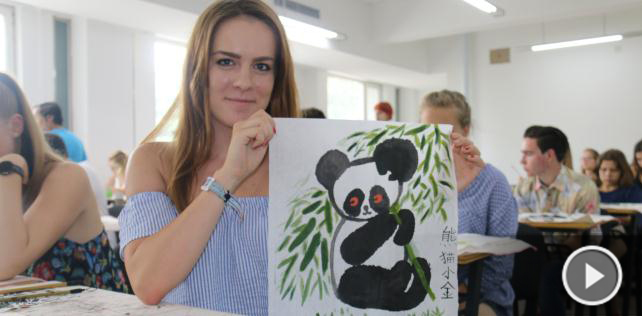Quantum leap in 'spooky action at a distance'
The distinguished American physicist Richard Feynman once said that if you think you understand quantum mechanics, you don't. The science behind the laws that govern the sub-atomic world has evolved over more than a century, revealing that the smallest particles behave outside the realm of classical physics.
Physicists have had to confront the weird reality that, at the smallest level, objects can behave as both particles and waves and, even more bizarrely, can be described as being in two places at once.
Even though the theories governing the sub-atomic world are still evolving, giving rise to alternative explanations of the nature of the universe-or, as some would contend, universes-quantum mechanics has already provided the basis for technological advances in the modern world.
Practical applications of quantum theory include superconducting magnets, the laser beam, transistors and the microprocessors that are at the heart of modern computing.
The next stage in this evolution is the field of teletransportation, an even more science-fiction sounding concept in which minute objects can be moved instantly across wide distances.
Chinese scientists this month claimed a world distance record with the announcement that they had successfully teleported a sub-atomic particle from the Earth to an orbiting satellite up to 1,400 kilometers away.
In its latest experiment, a Chinese team of scientists fired a laser from a ground station in the Tibet autonomous region to the orbiting Micius satellite. In so doing, the team effectively teleported a photon across space.
Quantum teleportation occurs when the properties of one object are instantly transferred to another at a distance. The remote photon takes on the identity of the one from the Earth and, to all intents and purposes, becomes the same object.
Albert Einstein called the phenomenon quantum entanglement or "spooky action at a distance".
The experiment raises familiar science fiction images of larger objects and even humans being teleported through space, physically beamed from one location to another. That is likely to remain in the realm of science fiction, at least for now. However, scientists have already seized on potential practical uses for teleportation.
The Chinese scientists not only set a distance record for teleportation, they also proved that it is possible to build a workable system for long-distance quantum communications. That could revolutionize electronic communications by making it impossible for outsiders to listen in without alerting the user, a major advance in the security of online traffic.
In these times, one may have to take such news with a pinch of salt. However, Oxford University physicist Ian Walmsley explained to the BBC that the technology could eventually provide the basis for a cloud-based computing network that allows information to be sent securely. "It's certainly a scientific breakthrough," he said of the Chinese achievement.
China already held the teleportation record, with a 2012 experiment that teleported information across 97 km. Up until now it had been impossible to create a longer-distance quantum link because an entangled photon can only travel about 160 km along a fiber-optic cable before being absorbed.
By using a satellite link, the Chinese team took advantage of the fact that photons travel more easily through space. The challenge to overcome was that it had previously proved difficult to transmit the particles through the Earth's atmosphere.
It is early days, but scientists in Jinan, Shandong province, have started trials on a secure network based on quantum technology. And scientists in Beijing and Shanghai are developing a system that uses quantum nodes situated about 96 km apart to measure quantum signals and send them on.
Brian Greene, a physics professor at New York's Columbia University, said the Chinese breakthrough evoked images of Star Wars and Harry Potter, in which wizards disappear from one location only to re-emerge at another.
"It's somewhere in between," he told the US' NPR network. "But honestly, you should be super excited about that. It's a crazy, wonderful thing that we can do this."
The author is a senior editorial consultant for China Daily. harveymorris@gmail.com






















